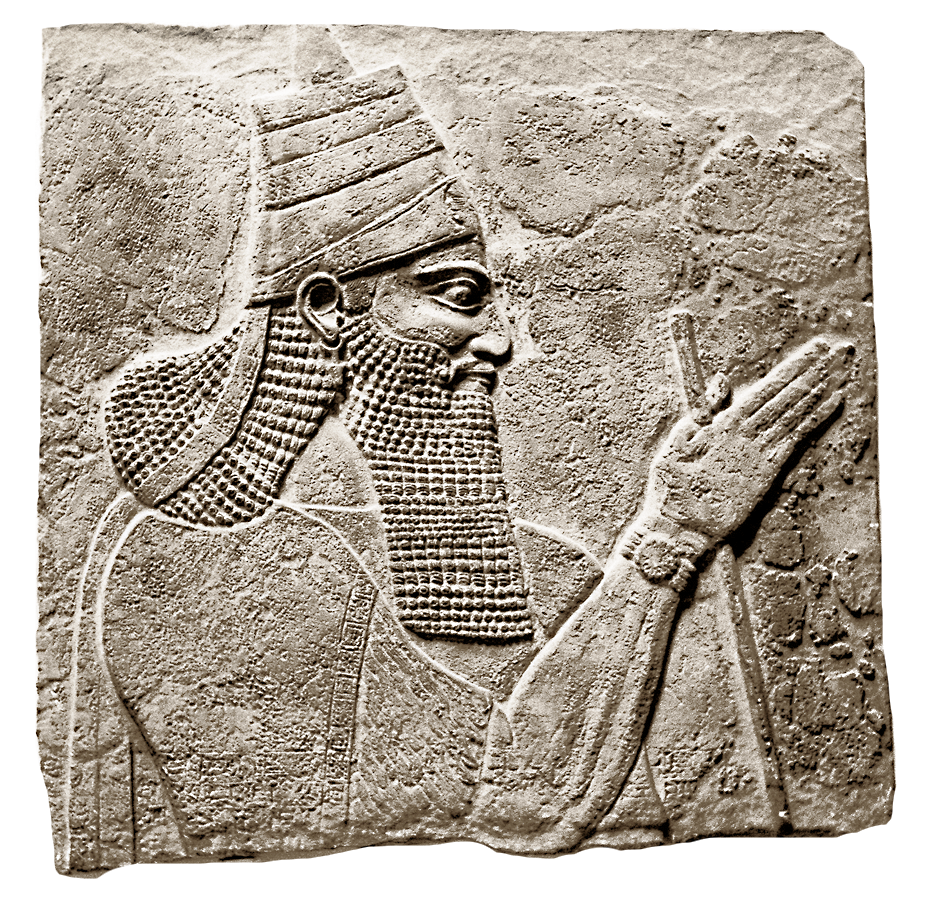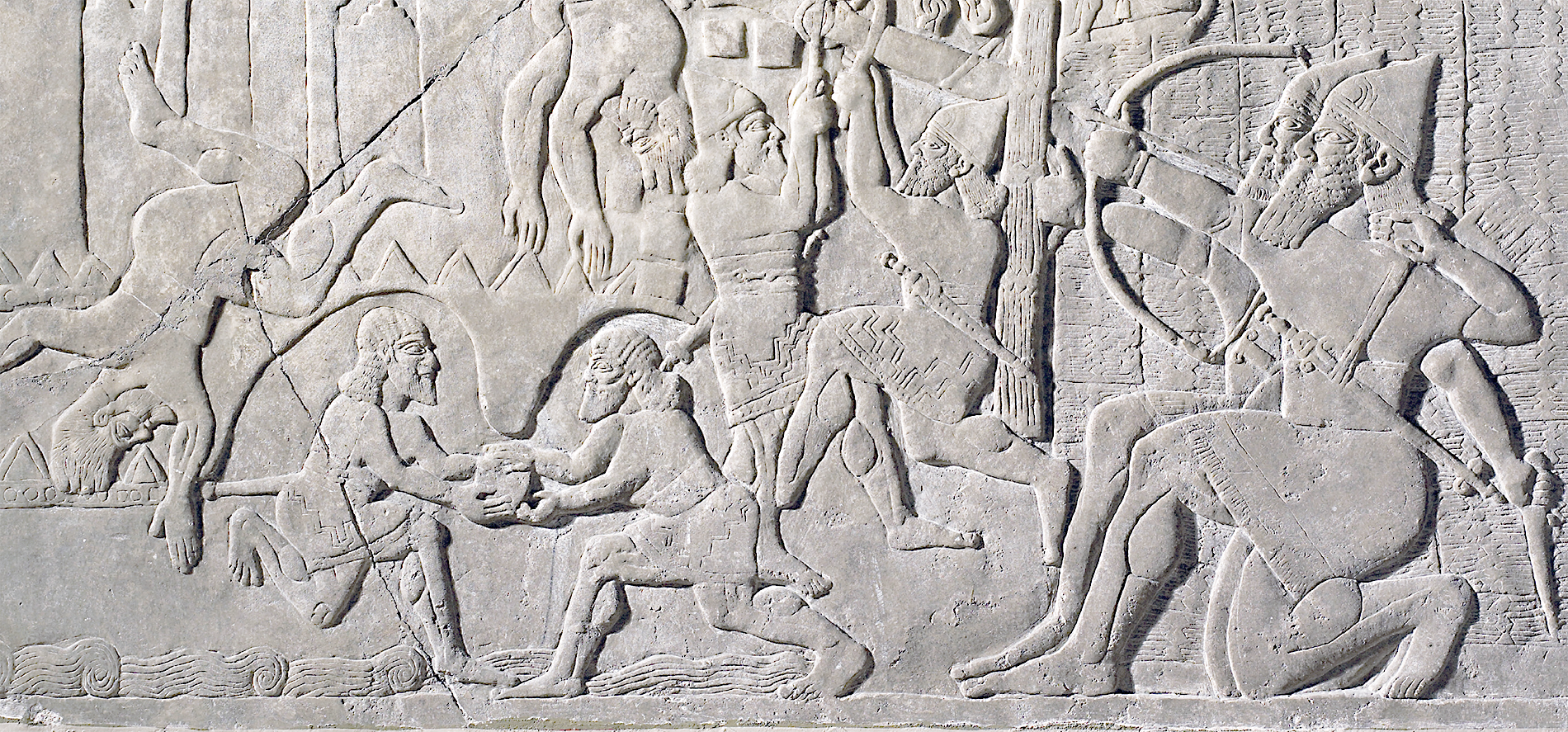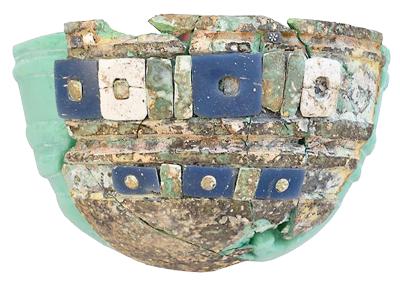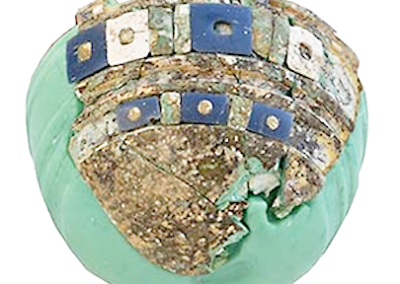
Bible, History, Archaeology
Bible,
History,
Archaeology
Teglath-Phalasar III, Assyrian king
In the 8th century BC, Assyria once again threatened the Near East. The rise to power of Teglath-Phalasar III (c. 744-727 BC) marked the beginning of a policy of territorial conquest that was to characterize the New Assyrian Empire.
 Who is Teglath-Phalasar III?
Who is Teglath-Phalasar III?
The name of Teglath-Phalasar III (in Akkadian) comes from the Bible. Tukulti-apil-esharra), first ruler of the New Assyrian Empire (745-610 BC).
Image opposite: fragment of a stele depicting Teglath-Phalasar III © Théo Truschel.
His relationship to his predecessor Assur-Nerari V is unclear. He is sometimes presented as his son or at least as a member of the royal family - he himself calls himself «son of Adad nerari» in his inscriptions.
Taking power
It was probably with the help of the governor of Kalkhû (Bel-Harran-beli-usur) that a coup d'état was launched against the reigning king Assur-nerari V and his general-in-chief the turtanu Shamshi-ilu, who were eliminated along with all their supporters. The new ruler was thus a usurper, a frequent occurrence in Assyrian succession to the throne.
Siege of a city by the Assyrian army: in the center, a mortally wounded defender falls from the wall, while at its base, two Assyrian engineers dig a large trench. Assurnazirpal's palace in Kalhu. British Museum, London.
The companies of Teglath-Phalasar III

The king then secured control of the access routes to Iran, before turning westwards, in Northern Syria, against the states that had stopped paying tribute. These campaigns were long and difficult (-743-738). The next stage took him further south, to the kingdoms of Damascus and Israel.
Image opposite: Teglath-Phalasar III seated on his throne in his palace at Nimrud, circa 740 B.C. Leiden Museum © Theo Truschel.
Unlike his predecessors, the king of Assyria did not reconstitute a system of vassal states in the west. Instead, he annexed them outright, dividing them into provinces administered by Assyrian governors answerable to him. The Empire was thus placed in the hands of King Teglath-Phalasar III alone.
Teglath-Phalasar III is considered to be the first Assyrian monarch to have implemented a policy of mass deportation and transfer of subjugated populations. In a single year, 154,000 people were forcibly displaced within the conquered lands. The aim of this cruel policy seems to have been to break the morale of national communities and weaken or suppress any desire to shake off the Assyrian yoke.
What does the Bible say about it?
He is the first Assyrian king whose name is mentioned in the biblical narrative. His name appears in different forms in the Historical Books: the text writes him as Tiglath-Pileser in 2 Chronicles 28:20, and he also appears as Pûl (or Poul) in 1 Chronicles 5:26 and 2 Kings 15:19-20.
According to Scripture, Menahem, king of Israel, gave him tribute (2 Kings 15:19), probably in 738 BC. In 734, Ahaz of Judah called on him for help against the Aramaean Rezin of Damascus and Pekah of Israel (2 Kings 16,7). The king of Assyria took Damascus in 732 (2 Kings 16.9), ravaged the kingdom of Pekah king of Israel (2 Kings 15.29) and deported a significant part of its population.
Teglath-Phalasar III is credited with the siege and destruction of the city of Dan, ancient Laish, in northern Israel. It was in the ruins of this city that archaeological excavations undertaken by Professor Avraham Biran's team in 1993/94 unearthed three basalt fragments of a stele bearing the expression «House of David», the first extra-biblical reference to the historical existence of King David.
Reconstituted glass paste bowl. Neo-Assyrian period Citadel of Amman, Jordan. École Biblique et Archéologique de Jérusalem. Photo J.M. de Tarragon, École Biblique.
Glass paste bowl. Neo-Assyrian period Citadel of Amman, Jordan.
Reconstituted glass paste bowl. Neo-Assyrian period Citadel of Amman, Jordan. École Biblique et Archéologique de Jérusalem. Photo J.M. de Tarragon, École Biblique.
Reconstituted glass paste bowl. Neo-Assyrian period Citadel of Amman, Jordan.




